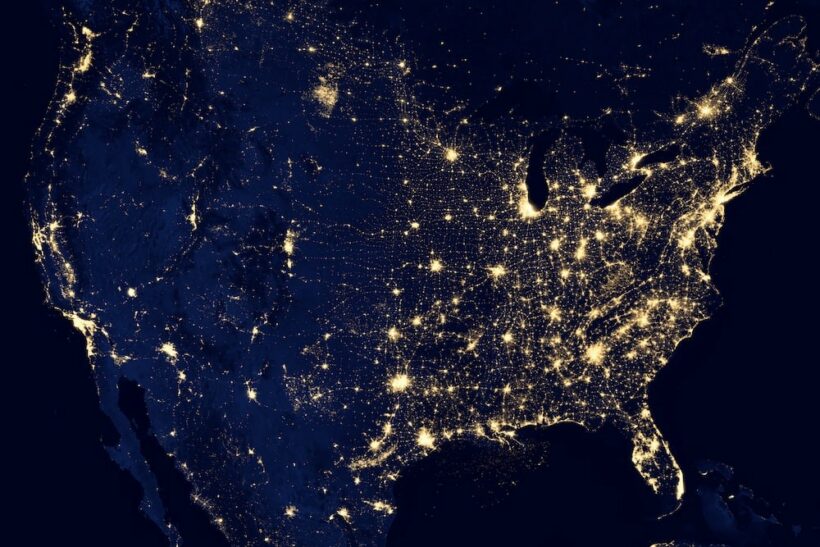In this essay, we offer three reflections on Mexico, Canada and the United States, a region that crosses political borders and in which universalist humanist values are likely to gain ground in the face of intolerance, xenophobia and economic exploitation.
By David Sámano
The first reflection is inspired by Eric Wolf, an anthropologist of Jewish origin who carried out several studies in Mexico. His thinking shows us how wrong it is to adopt a view that divides societies and cultures into impenetrable, static blocks or closed systems. If there are connections everywhere – Wolf asks her – why do we insist on turning dynamic, interconnected phenomena into static, disconnected things?
This, according to Wolf, is the result of a one-sided way of writing world history according to arguments of good versus evil, where the winner is usually the good guy. This history says nothing, for example, about the impact of the forced and involuntary integration of various peoples into the capitalist system. The history of the West conceived as a civilisation independent of the others is the only one that is written. It is presented as the history of freedom and happiness, starting with the Greeks and reaching its consummation with the United States of America.
In the textbooks, the thirteen colonies are presented as a divine mission, when in reality it was an orchestration of antagonistic forces. Events could have gone differently, he says:
“There could have emerged a polyglot Floridian republic, a Mississippi and French-speaking America, a Hispanic New Biscay, a Great Lakes Republic, a Columbia comprising present-day Oregon, Washington, and British Columbia.” “What would we learn from ancient Greece if we were to interpret it solely as a prehistoric Miss Liberty, holding the torch of moral purpose in the darkness of barbaric night?” -Wolf asks – to which she replies, “we would not understand why there were more mercenary Greeks fighting in the ranks of the Persian kings than in the ranks of the Hellenic Alliance against the Persians”.
Following this line of thought, if historians of the future take seriously the “good guys versus bad guys” story to explain the US invasion of Iraq, they would not understand why part of the US army was made up of Mexicans, while at the same time the US government was preoccupied, as never before in its history, with delimiting its border with Mexico. Nor will they understand many paradoxical aspects of the migration phenomenon, such as the fact that the toughest immigration legislation the United States has ever had occurred during the years of greatest economic and employment growth, or that the budget for the border patrol has grown uninterruptedly since 1996, along with the pressure from business groups (agribusiness, meat processors and packers, computer companies) for an increase in the number of foreign currency permits for foreign workers.
But these relations are not recognised if we attribute to nations, societies or cultures the quality of internally homogeneous and externally limited, impenetrable and differentiated objects, as if they were billiard balls on a table. What this categorisation, based on essentialities, leads to is to classify the world according to its different colours, and then to construct fictions such as the one that claimed that there was a “modern” world of the West and another of the East that had fallen into the clutches of communism, and a third world, still tied to tradition, that would be saved by the West (Wolf, 1987).
Our second reflection is based on the consideration that in the last three decades, the United States has maintained a state policy that is not limited to the protection of economic interests, but has expanded towards objectives that aim to control energy and the world’s natural resources.
Let us take a brief historical account of power, which implies control, in the region. Let us start from two main processes: one of horizontal expansion and the other of vertical expansion in the evolution of the power structures of humanity (Adams, 1973).
The process of horizontal expansion, in the case of North America, began with the arrival of humans on the continent. These first settlers adapted to their environment without requiring a vertical, hierarchical organisation, but rather a political one, of the band, chiefdom or tribe type. As the continent became more populated over the millennia, interactions increased and at the same time, local cultures took shape, new hierarchical levels of power and control emerged and enveloped these cultures. With the discovery of agriculture and the appearance of cities, we find more hierarchical organisational levels, such as states, which delimited cultural sub-regions (Mayan and Teotihuacan empires, among others). The arrival of the Europeans brought with them the monarchies and their colonial era. Incipient and diffuse boundaries were set between English, French and Spanish power. Afterwards, as we know, just under two hundred years ago, independence movements took place and nation states were formed. A level of socio-cultural integration that involved several sub-regions. It is a very brief moment in history, compared to the period of horizontal expansion, which began several tens of thousands of years ago. Subsequent advances and setbacks in the 19th century of our era eventually defined nations such as Mexico, the United States and Canada. In the early days of these American nation states, borders were redefined.

This process was guided by the power that one state could exercise over the other; thus, the United States annexed large parts of Mexico. In the midst of these redefinitions, the border towns were divided. Subsequently, this process has been integrated into a larger one, directed towards the constitution of a global hierarchy, the culminating point of the vertical expansion of mankind’s power structures. Following this trend, during the second half of the 20th century, an attempt was made to define a region from exclusively economic perspectives, with clearly unequal conditions, the infamous Free Trade Agreement (FTA). Despite the awareness that everyone had of the absurdity of this project, no one was able to stop it, because ultimately, it all responded to the general trend of concentration of power, as inescapable as the second law of thermodynamics acting in a closed system. We are reluctant to conclude this very tight story with the entropic death of closed systems. We prefer to adopt approaches that leave room for the humanist intentionality of peoples, and to use points of view that allow us to appreciate the processes of civilisations longitudinally, not only the synchronic-economistic ones.
It is in the context of this type of model that we present our third and final consideration. Serguei Semenov, one of the authors of the new humanism, speaks of frontier civilisations as bridges to the one and multiple humanity (1995). This idea conceives of frontier civilisations as products of synthesis-symbiosis of various cultures, not only genetically close, but also distant. These civilisations were formed on the permeable borders between East and West, North and South.
Semenov considers them to be open multidimensional complex systems. In his text he recognises, among others, three frontier civilisations: the Ibero-American, the Danubian-Balkan and the North-East Eurasian. He finds common aspects among all three, such as spanning several continents, being geographical regions of great migratory flows (from the poor south to the affluent north) and harbouring enormous cultural diversity. Semenov also lists a series of distances and approaches of these cultures with respect to humanism. In the case of the Ibero-American culture, which penetrates North America, he mentions the utopianism rooted in the social consciousness of almost all Latin American peoples. In our opinion, Luther King’s nonviolent anti-discrimination struggle and the ideals of peace and love of the young Americans of the 1960s and 1970s represent their equivalent in the United States. This makes it clear that humanism represents a great source of inspiration for the regional identification of peoples in regions where different civilisations come into contact with each other.

Today, however, the exchange between Ibero-American civilisation and the populations of North America is in danger, since the latter reside in the place where world power is most concentrated, and it is well known how the latter react when they feel their interests are threatened. However, on the North American side, more and more groups are speaking out against barriers between peoples.
On the other hand, Latin American civilisation continues to draw closer in various ways, for example, through migrants, offering their force for work. They are the bearers of profound experiences of humanitarian aid in natural[1] and social disasters (which, unfortunately, seem to be multiplying everywhere). They also weave countless relationships of solidarity between individuals; ethnic, family, and/or friendship ties. We trust that all this will add elements to the humanist culture of these northern areas of America, thus strengthening and clarifying their path towards the Universal Human Nation.
Text prepared for discussion at the: North American Forum for New Humanism, held on 16, 17 and 18 November 2007 in New York City.
David Sámano is a full-time research professor at the Universidad Autónoma de la Ciudad de México (UACM) and researches topics related to epistemology, philosophy of science and anthropology of science.
Bibliography:
Wolf, Eric. Europa y la gente sin historia. Fondo de Cultura Económica. 1987.
Addiechi, Florencia. Fronteras reales de la globalización. The United States and Latin American Migration. 2005.
Steward, Julian. Theory of Cultural Change. 1973.
Adams, N. Richard. The Web of Human Expansion. 1978.
Semyonov, Serguei. Frontier Civilisations as Bridges to the One and Multiple Humanity. Yearbook of the World Centre for Humanist Studies. 1995.
[1] Such as the relief efforts of the population in the 1985 earthquakes in Mexico City.
Article from the book Interpreting New Humanism. Ethnology, Epistemology and Spirituality. https://edicionesleonalado.net/es/producto/interpretando-al-nuevo-humanismo/
——————————————————–
👉 HUMANIST SOCIAL NETWORK New Paradigms
PUBLIC CHANNEL: https://t.me/IHPSnuevosparadigmas/160
LINKED GROUP: https://t.me/+M3b8fuhQS19lYzRk










